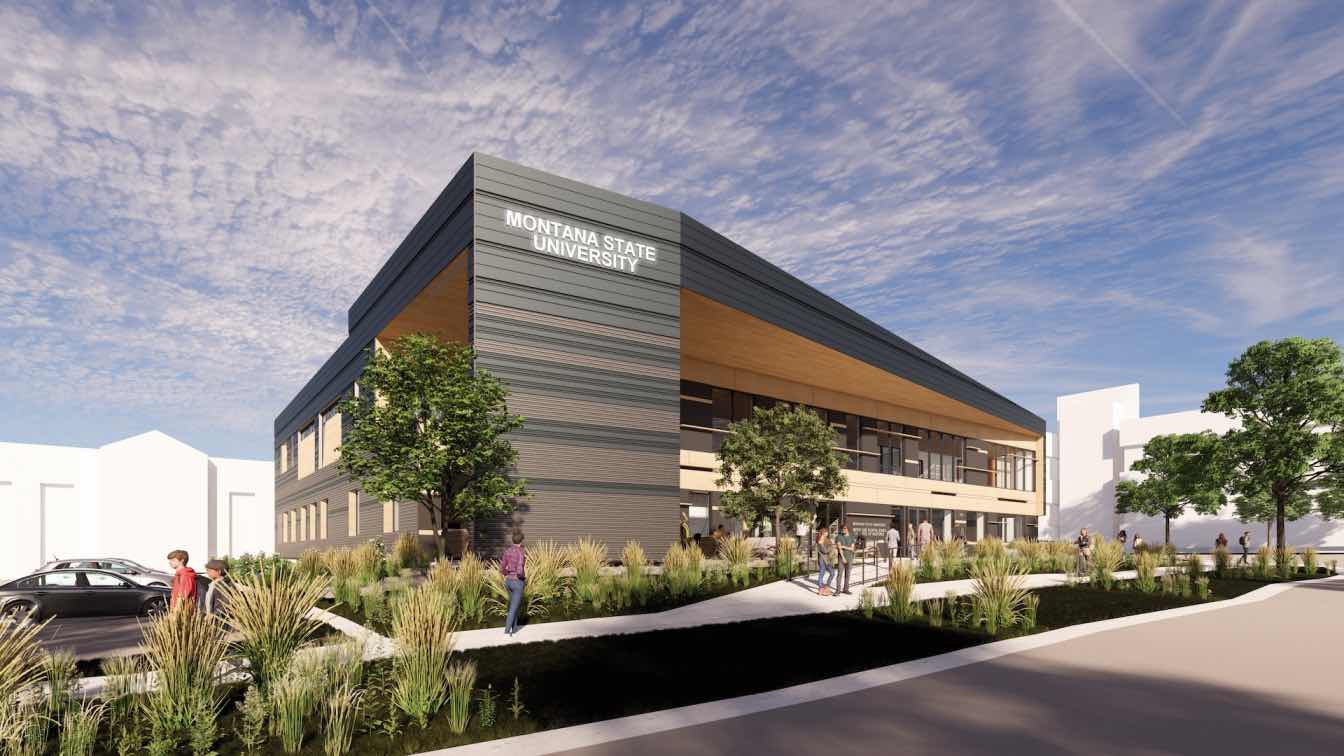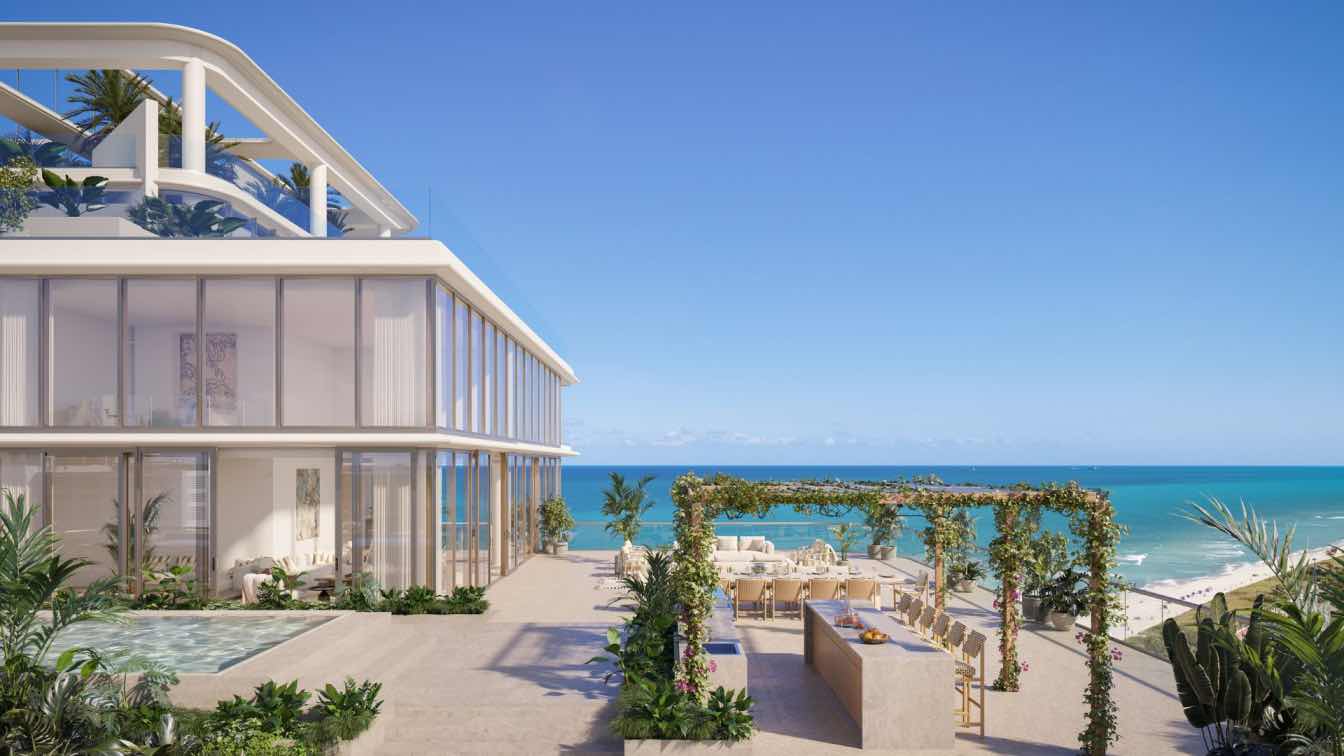Cushing Terrell and CO Architects Design and Implement Five New Campus Buildings Throughout the State.
Thanks to a $101-million investment from Montana business owners Mark and Robyn Jones, Montana State University’s College of Nursing is building five new facilities at MSU campuses throughout the state. “These new buildings will provide students with a better learning experience and allow us to increase enrollment to help meet the critical nursing shortage in Montana,” says Sarah E. Shannon, PhD, RN, FAAN, Professor and Dean of the MSU Mark and Robyn Jones College of Nursing. About 80 percent of MSU’s current 300-plus annual nursing graduates remain in the state. New facilities will be built in Billings, Bozeman, Great Falls, Kalispell, and Missoula, providing dedicated educational and laboratory spaces for MSU’s statewide nursing campuses.
The overarching design philosophy employed by the collaborative team of Cushing Terrell and CO Architects is a “kit of parts,” with each building customized for its location. Cushing Terrell Principal Jim Beal, AIA, elaborates: “Designing and programming for five connected but distinct nursing facilities across Montana was a complex and rewarding challenge. With elements of the landscape and local characteristics incorporated, each facility stands alone as a true representation of its surroundings, while the collective provides widespread access to state-of-the-art nursing education resources that MSU is known for.”
Health-sciences education specialist CO Architects leads the design and implementation of the facilities’ high-tech teaching tools. “To engage and retain students, modern learning technologies and equipment are seamlessly integrated into the students’ training and study spaces,” says CO Architects Principal Jonathan Kanda, FAIA. “The current nursing curricula emphasizes hands-on skills development and empathetic communication. This experience-centric approach will provide MSU nursing students consistent, high-quality training across the five locations.”
 Model of Montana State University Jones College of Nursing. Photo courtesy of CO Architects
Model of Montana State University Jones College of Nursing. Photo courtesy of CO Architects
Designed specifically for nursing education, each MSU building will feature skills-based and didactic learning environments, including technology-driven clinical skills and simulation suites, multi-purpose learning studios, student study and support spaces, administrative offices, meeting areas, and landscaped greenspace. While the buildings vary in size, they feature architectural features, programs, and layouts based on a theoretical “kit of parts”—10 unifying elements that form a common design language:
Building silhouette inspired by the mountains against Montana’s Big Sky
Big Sky(light)
Warm, contextually inspired materials
Structural simplicity
Front porch for a welcoming feeling
Central “Nursing Gallery” space and stairway
Flexible learning spaces
Group and solo study spaces
Nooks and crannies for socializing and reflection
A distinctive focal element
 Montana State University Jones College of Nursing, Billings, by Cushing Terrell and CO Architects (architects), Langlas & Associates (contractor). Image courtesy of CO Architects
Montana State University Jones College of Nursing, Billings, by Cushing Terrell and CO Architects (architects), Langlas & Associates (contractor). Image courtesy of CO Architects
The buildings’ exterior architecture prioritizes clean lines, simplicity, and functionality. Unified materials, forms, and palettes are inspired by Montana’s dramatic landscapes and the geological processes of carving, eroding, and shearing. The buildings’ outer shells figuratively and literally protect and provide shelter to their occupants.
Flexibility is integrated into the plans, allowing for future adaptability—or even expansion—as educational needs evolve. All five facilities are designed to LEED Silver sustainability standards.
The architects insured that each location would display designs that relate to the building’s site and surrounds.
Billings: As the area was once under water, the sediment left behind formed sandstone rimrocks. The Yellowstone River later carved cliffs in the sandstone. The 24,400-square-foot MSU Billings nursing facility draws material inspiration from the rimrocks and rim stratification. Darker facade colors are derived from nearby Sacrifice Cliff and contrast with neighboring buildings on campus.
Bozeman: At the base of six mountain ranges comprising the Belt Supergroup, Bozeman’s local landscape features glaciers carved by a rifting event. Texturally, nearby Bridger Mountain’s smooth stone sides were filed by sliding rocks developed during folding, which also created strata of varying angles. The 26,230-square-foot Bozeman building’s materiality draws from this geology, complementing the adjacent MSU fitness center and contrasting handsomely with a neighboring darker-clad building.
Great Falls: In a tectonic zone beneath the Missouri River, Great Falls’ landscape was shaped by melting glaciers. Falls resulted when soft sandstone layers eroded over harder bedrock. MSU’s 17,030-square-foot Great Falls nursing building borrows textures from the glacial lakes near Rainbow Falls and natural colors from the landscape’s layered materials.
Kalispell: Near Glacier National Park, this area’s verticality came from subduction and thrusting plates, later sculpted into rugged textures by glacial melting. The 18,340-square-foot Kalispell building’s materiality and palette summon the region’s lakes, mountains, and forests.
Missoula: In the hub of five valleys on the Clark Fork River near the confluence of two other rivers, Missoula was once the bottom of a glacial lake. The city’s thriving arts scene distinguishes it from other Montana cities and energizes its pastoral setting, which is complemented by the 19,370-square-foot Missoula nursing building’s bold and contrasting materials.
In addition to the five new buildings, the historic $101-million investment by Mark and Robyn Jones will establish five endowed professorships and support the development of a nurse-midwifery program, as well as fund student scholarships. As the sole source of nursing education in Montana, the MSU Mark and Robyn Jones College of Nursing buildings are scheduled to open in 2026. In addition to Cushing Terrell and CO Architects, the project team includes local contractors Langlas & Associates (Billings), Martel Construction (Bozeman), Sletten Construction (Great Falls), Swank Enterprises (Kalispell), and Jackson Contractor Group (Missoula).

Montana State University Jones College of Nursing, Billings, by Cushing Terrell and CO Architects (architects), Langlas & Associates (contractor). Image courtesy of CO Architects

Montana State University Jones College of Nursing, Bozeman, by Cushing Terrell and CO Architects (architects), Martel Construction (contractor). Image courtesy of CO Architects

Montana State University Jones College of Nursing, Bozeman, by Cushing Terrell and CO Architects (architects), Martel Construction (contractor). Image courtesy of CO Architects

Montana State University Jones College of Nursing, Bozeman, by Cushing Terrell and CO Architects (architects), Martel Construction (contractor). Image courtesy of CO Architects

Montana State University Jones College of Nursing, Bozeman, by Cushing Terrell and CO Architects (architects), Martel Construction (contractor). Image courtesy of CO Architects

Montana State University Jones College of Nursing, Great Falls, by Cushing Terrell and CO Architects (architects), Sletten Construction (contractor). Image courtesy of CO Architects

Montana State University Jones College of Nursing, Great Falls, by Cushing Terrell and CO Architects (architects), Sletten Construction (contractor). Image courtesy of CO Architects

Montana State University Jones College of Nursing, Kalispell, by Cushing Terrell and CO Architects (architects), Swank Enterprises (contractor). Image courtesy of CO Architects

Montana State University Jones College of Nursing, Kalispell, by Cushing Terrell and CO Architects (architects), Swank Enterprises (contractor). Image courtesy of CO Architects

Montana State University Jones College of Nursing, Missoula, by Cushing Terrell and CO Architects (architects), Jackson Contractor Group (contractor). Image courtesy of CO Architects

Montana State University Jones College of Nursing, Missoula, by Cushing Terrell and CO Architects (architects), Jackson Contractor Group (contractor). Image courtesy of CO Architects
About Cushing Terrell
Cushing Terrell was founded in 1938 on the belief that integrating architecture, engineering, and design opens the doors for deepened relationships and enhanced creativity. This foundation continues to define the firm and its multidisciplinary team today. With 13 offices across the United States and services spanning 30 disciplines, the team works collaboratively to design systems and spaces that help people live their best lives and enjoy healthy, sustainable built environments.
About CO Architects
Los Angeles-based CO Architects is nationally recognized for architectural planning, programming, and design in the higher education, science and technology, healthcare, and civic and cultural sectors, and works with leading institutions from coast to coast. CO Architects’ specialized expertise includes transformative schools of medicine and health professions, advanced research and teaching laboratories, and innovative clinical facilities on higher education, health care, and urban campuses. The firm has been nationally and internationally recognized with more than 225 awards for innovative design and project delivery, including the AIA California’s Architecture Firm of the Year Award.
About MSU Nursing School
Montana State University’s Mark and Robyn Jones College of Nursing educates potential nurses to combine empathetic connection and clinical judgement to provide holistic, client-centered health care to their patients. Undergraduate students complete the pre-nursing curriculum and then are admitted into the nursing coursework learning in rigorous, hands-on learning environments at one of five campus sites in Bozeman, Billings, Great Falls, Kalispell, and Missoula. At the conclusion of the bachelor’s program, students are prepared to sit for the NCLEX-RN examination and become a registered nurse in the field. The college offers two undergraduate options: the traditional BSN in Nursing and the Accelerated BSN in Nursing. In addition, the MSU College of Nursing offers a Doctor of Nursing Practice degree (DNP) to prepared advanced practice nurses including family nurse practitioner, psychiatric-mental health nurse practitioner, and nurse-midwife. The college also offers a master’s degree in rural clinical leadership. The Mark and Robyn Jones College of Nursing’s motto is “five campuses | one college | serving Montana.”





